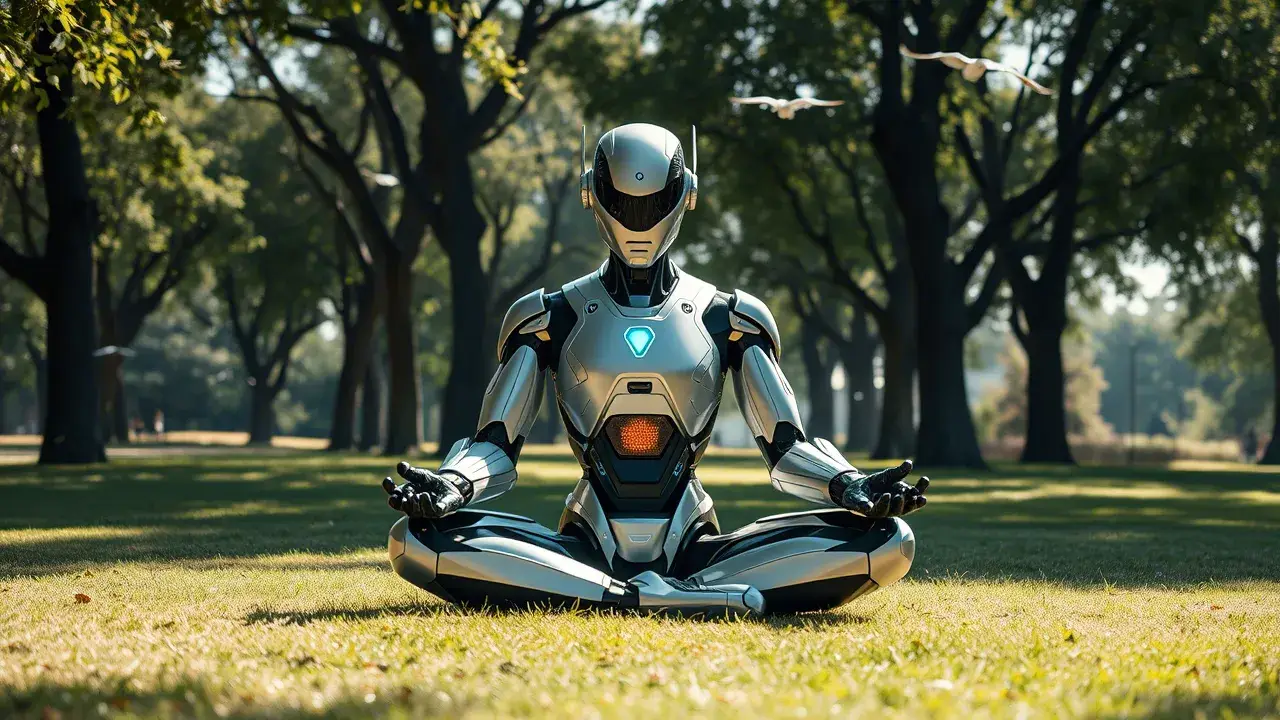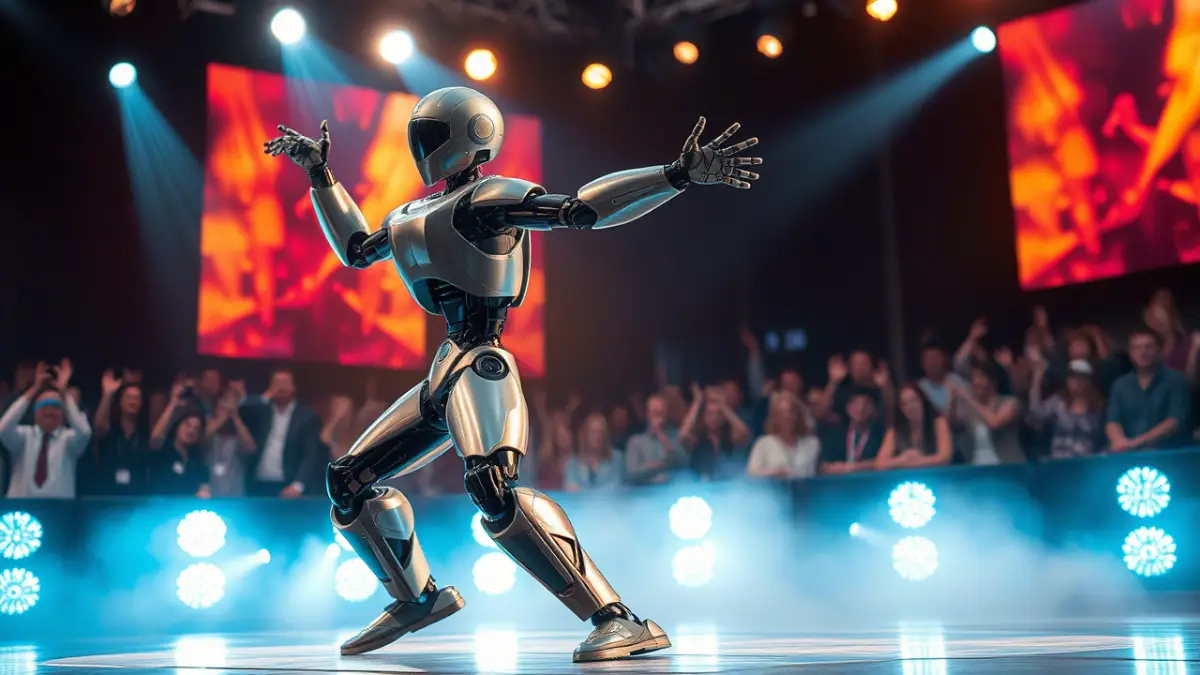You've probably heard of ChatGPT, Midjourney or Google Gemini. These tools, which seem to have come straight out of a science fiction film, are in fact concrete applications of theGenerative AI. But what does this really mean? And why does this technology arouse so much interest (and sometimes concern)? Let's delve into this fascinating world together.

Understanding generative AI
Generative AI is a fascinating and revolutionary branch of artificial intelligence. Unlike traditional AI systems, which simply interpret, classify or predict from existing data, generative AI is designed to create. Yes, to create - that is, to produce original content that didn't exist before. This includes text, images, video, music, synthetic voices, or even functional computer code.
The fundamental difference betweenGenerative AIis its ability to understand the underlying structures of information. It doesn't just imitate; it synthesises, reformulates and imagines. Imagine a digital artist, fed by the analysis of millions of works: by dint of observing, deciphering and comparing, he becomes capable of producing a unique painting, totally original, but whose style remains consistent with the inspirations he has studied. This is exactly how this technology works. It learns from vast bodies of data to deduce models, then uses them to generate completely new content that is still logical and relevant in its context.
For example, when you ask ChatGPT a question, it doesn't consult a database of ready-made answers. Instead, it analyses your request, draws on what it has learned and generates an answer in real time, word by word. This capability is made possible by advanced architectures such as the transformwhich underpins most of today's generative AI tools.
And this is just the beginning. Generative AI is profoundly transforming the way we produce, consume and interact with information. It is becoming a true creative partner, whether you are a developer, graphic designer, musician, entrepreneur or simply curious. Thanks to it, the human imagination can express itself on a previously unimaginable scale, propelled by the power of computing and the wealth of data.
How does generative AI work?
At the heart of generative AI are models called transformerssuch as GPT (Generative Pre-trained Transformer) developed by OpenAI. These models are trained on huge volumes of data to learn structures, styles and contexts.
For example, ChatGPT, based on GPT-4, has been trained to understand and generate text fluently by reading billions of words. When asked a question, it predicts the most likely outcome based on its learning.
In addition, techniques such as Recovery Enhanced Generation (RAG) allow these models to access external databases to enrich their responses, thus combining deep learning and information retrieval.
A wide range of practical applications
Generative AI is not just a theoretical concept; it is already present in many fields:
- Artistic creation Tools such as Midjourney can generate works of art from simple text descriptions. Amateur artists are using these technologies to explore new styles and expressions.
- Education and training Educational platforms integrate generative AI to create personalised content, interactive quizzes or explanations tailored to the level of each pupil.
- Health In the medical field, generative AI helps to create personalised treatment plans or generate detailed medical reports.
- Companies Companies such as Forvis Mazars are training their employees to use generative AI to improve productivity, in particular by automating report writing and document analysis.

The benefits of generative AI
- Time saving Automating repetitive tasks allows you to concentrate on higher added-value activities.
- Customisation Generative AI can adapt content to the specific needs of each user.
- Accessibility It democratises content creation, enabling people with no technical skills to produce high-quality works or texts.
Challenges and limits
As promising and innovative as it is, theGenerative AI raises a number of important issues to which it is essential to remain attentive. Like any powerful technology, it carries a degree of risk that should not be underestimated.
1. Quality, veracity and bias
One of the main challenges of generative AI lies in the reliability of the information it produces. Models can generate content that appears perfectly credible on the surface, but which in reality contains factual errors, approximations or obsolete data. These are sometimes referred to as AI 'hallucinations': moments when the model 'invents' inaccurate facts, without malicious intent, simply because the statistical structure suggests it should.
This can have real consequences, particularly in sensitive areas such as health, finance and education. That's why it's essential, as a user or content creator, to systematically check the information generated by an AI, even if they seem coherent.
In addition, generative AI models can inherit from bias present in the data on which they have been trained. For example, if a corpus of texts favours certain stereotypes or ignores certain cultural perspectives, the model runs the risk of reproducing - or even amplifying - these imbalances. This is a major challenge if we are to guarantee ethical and inclusive AI.
2. Intellectual property and ethical responsibilities
Creating with generative AI also raises a number of issues. wide-ranging legal and moral issues. Who is the true author of machine-generated content? Is it the person who made the request (the prompt)? The company that trained the model? Or is it nobody, since the content is purely synthetic?
Current legislation is still struggling to answer these questions. Some artists and creators are rightly concerned that their works may be used, without their consent, to train generative AIs which then reproduce similar styles. This raises the question of respect for copyright and fairness in the use of data.
At the same time, generative AI can also be misused to produce misleading contentThese include deepfakes, disinformation texts and false evidence. The line between what is real and what is synthetic is becoming blurrier than ever, and that means we need to be doubly vigilant.
3. Technological dependence and loss of skills
Finally, a more insidious challenge: the dependency. The more powerful generative AI becomes, the more it becomes part of our professional and personal habits. And the more it takes on creative or analytical tasks, the greater the risk of unlearning certain fundamental human skills writing, critical thinking, synthesis, artistic creation...
This externalisation of knowledge can make us passive in the face of the machine, if we do not make a conscious effort to stay in control on intellectual processes. It's not a question of rejecting AI, but of using it as a complementary tool, at the service of our abilities - and not as a pure and simple replacement.
The future of generative AI
Generative AI is constantly evolving. Companies such as Google are developing multimodal models capable of processing text, image and audio simultaneously, opening the way to even more immersive applications.
Initiatives are also underway to make these technologies more transparent and ethical, by incorporating control and validation mechanisms.
Conclusion
L'Generative AI represents a major advance in the field of artificial intelligence. It offers unprecedented opportunities for creativity, education, health and many other sectors. However, like any powerful technology, it needs to be used carefully and ethically.
If you'd like to explore this subject further, here are a few resources:









